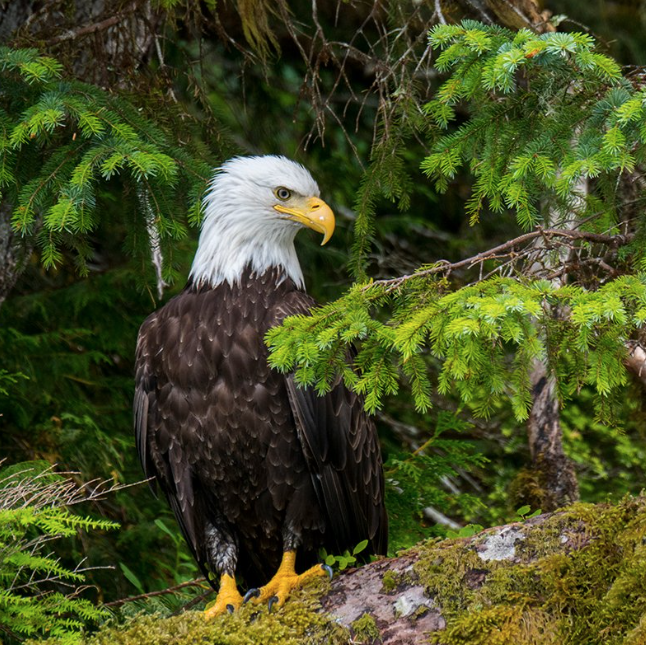British scientists have discovered that the putty-nosed monkey in Nigeria pictured above sometimes communicates by combining sounds into a sequence that has a different meaning from any of its component calls, an ability that was thought to be uniquely human.
Just like dove. They cooo and mourn, but when startled they let out a
consistant pattern that warns other doves. Deer snort when danger is
present, warning other dear.
Frogs croak when chatting, but yelp when startled, again notifying others
Many animals communicate by smell: they release pheromones (airborne
to send messages to others).
Chimpanzees greet each other by touching hands.
Male fiddler crabs wave their giant claw to attract female fiddler crabs.
White-tailed deer show alarm by flicking up their tails.
Dogs stretch their front legs out in front of them and lower their bodies when
they want to play.
Elephants show affection by entwining their trunks.
Giraffes press their necks together when they are attracted to each other.
Gorillas stick out their tongues to show anger.
Horses rub noses as a sign of affection.
Kangaroos thump their hind legs to warn others of danger.
Prairie dogs bare their teeth and press their mouths together to discover if
they are friends or foes.
Whales breach (leap out of the water) repeatedly to send messages to
other whales.
Swans entwine their long necks both to fight and to court.
Some predators communicate to prey in ways that change their behaviour
and make them easier to catch, in effect deceiving them. A well-known
example is the angler fish, which has a fleshy growth protruding from its
forehead and dangling in front of its jaws; smaller fish try to take the lure,
and in so doing are perfectly placed for the angler fish to eat them.
A cleaning station is a location where fish, and other marine life, congregate
to be cleaned.
The cleaning process includes the removal of parasites from the animal's
body (both externally and internally), and can be performed by various
creatures (including Cleaner Shrimp and numerous species of fish,
especially wrasses and gobies).
When the fish approaches a cleaner station they will pose in an 'unnatural'
way to show the cleaner fish that they will not eat them, this can be pointing
in strange direction and/or opening their mouths wide. The cleaner fish will
then eat the parasites directly from the skin of the cleaned fish, it will even
swim into the mouth and gills of the fish to be cleaned.
The following forms of communication can also be used for
interspecific communication.
The best known forms of communication involve the display of distinctive
body parts, or distinctive bodily movements; often these occur in
combination, so a distinctive movement acts to reveal or emphasise a
distinctive body part. An example that was important in the history of
ethology was the parent Herring Gull's presentation of its bill to a chick in
the nest. Like many gulls, the Herring Gull has a brightly coloured bill, yellow
with a red spot on the lower mandible near the tip. When it returns to the
nest with food, the parent stands over its chick and taps the bill on the
ground in front of it; this elicits a begging response from a hungry chick
(pecking at the red spot), which stimulates the parent to regurgitate food in
front of it. The complete signal therefore involves a distinctive morphological
feature (body part), the red-spotted bill, and a distinctive movement
(tapping towards the ground) which makes the red spot highly visible to the
chick.
The avian vocal organ is called the syrinx; it is a bony structure at the
bottom of the trachea (unlike the larynx at the top of the mammalian
trachea). The syrinx and sometimes a surrounding air sac resonate to
vibrations that are made by membranes past which the bird forces air. It
controls the pitch by changing the tension on the membranes and controls
both pitch and volume by changing the force of exhalation. The bird can
control the two sides of the trachea independently, which is how some
species can produce two notes at once.
The songs of different species of birds vary, and are more or less
characteristic of the species. In modern-day biology, bird song is typically
analysed using acoustic spectroscopy. Species vary greatly in the complexity
of their songs and in the number of distinct kinds of song they sing (up to
3000 in the Brown Thrasher); in some species, individuals vary in the same
way. In a few species such as starlings and mockingbirds, songs imbed
arbitrary elements learned in the individual's lifetime, a form of mimicry
as the bird
In many species it appears that although
the basic song is the same for all members of the species, young birds
learn the details of their songs from their fathers, and this allows variations
to build up over generations, a form of dialect.
Sit back sometime, in a quiet, pleasant location and listen to the mocking
bird. I've done this many times, jacking with the birds, whistling out crazy
patterns, only to see them mimmick me perfectly.
It's called programming bro. Programming comes from intelligence by
defintion.
Cause and Effect: Whatever something is derived from is greater in all
dimensions: i.e.intelligence of species <= to the cause.
How does one derive, in right mind, that the cause of something is less than
the result?




 :
: